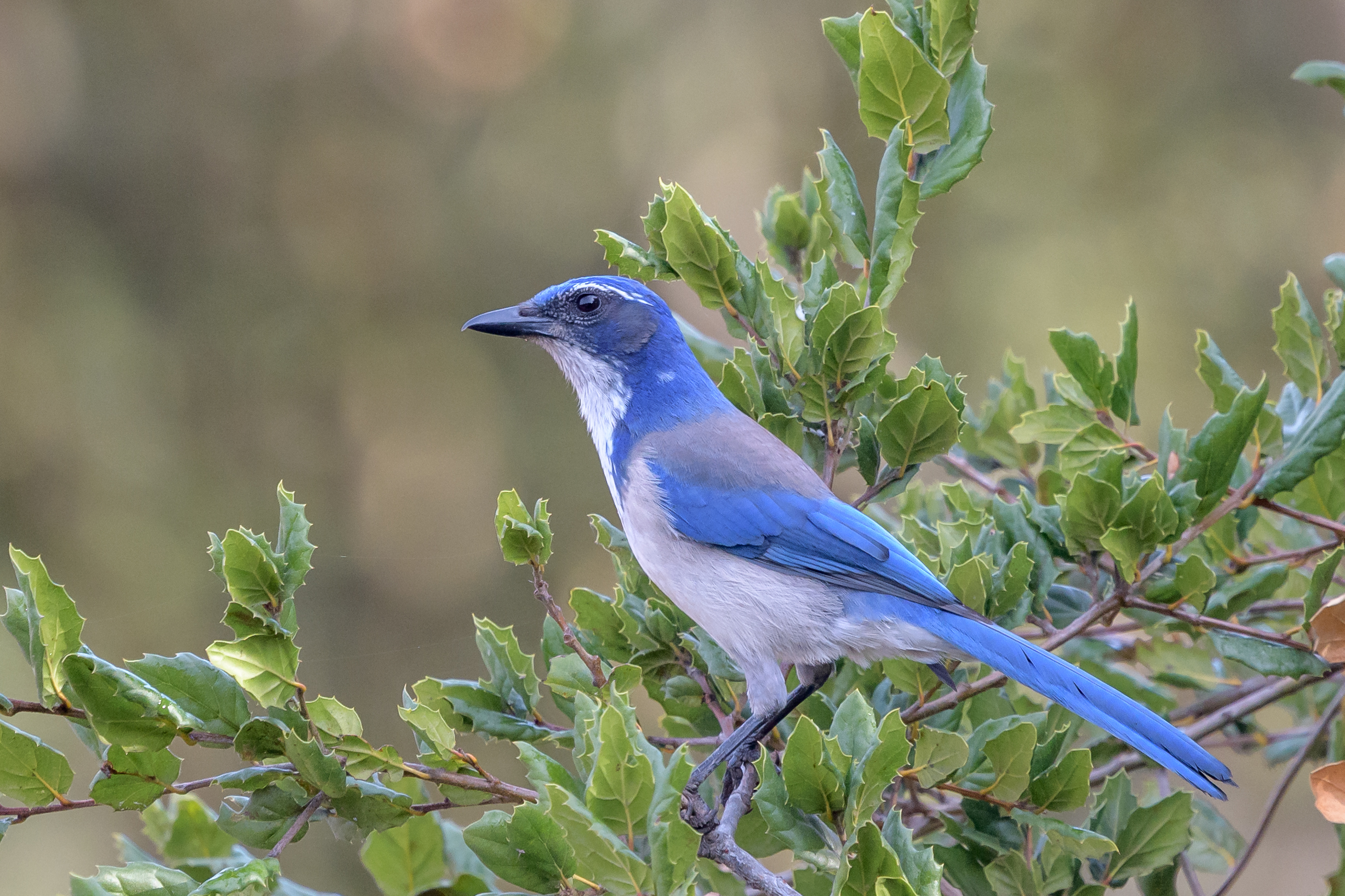
Stepping into the wild, there’s a certain thrill in encountering nature’s most vibrant and intelligent residents, and few birds capture our imagination quite like the jays. These dazzling members of the Corvidae family, which also includes crows, ravens, and magpies, are renowned for their bold, often raucous manner and their surprisingly high intelligence. From their flashy plumage to their intricate social dynamics, jays offer a window into a world of complex avian behaviors right in our backyards and wild landscapes.
Indeed, jays aren’t just pretty faces; they’re considered among the most intelligent species in the bird world. With strong bills suited for a diverse diet, these omnivorous birds are particularly fond of nuts, famously hoarding thousands of acorns for winter provisions. Their monogamous nature sees them mating for life, working cooperatively to build nests and fiercely guarding their growing families. While often noisy and found in boisterous groups—aptly named a ‘band,’ ‘cast,’ ‘party,’ or ‘scold’—they can also be shy, using their high, screeching calls to alert others when disturbed.
North America alone is home to a remarkable diversity of these captivating creatures, with 12 distinct species showcasing a spectrum of colors, calls, and captivating habits. From the familiar bright blue of the eastern Blue Jay to the unique ecological story of the Island Scrub-Jay, each species holds its own set of wonders. We’re about to embark on an exciting journey, exploring these incredible birds, their preferred habitats, their dietary quirks, and even a groundbreaking discovery that highlights the rapidly changing natural world around us: the enigmatic ‘Grue Jay’ hybrid.
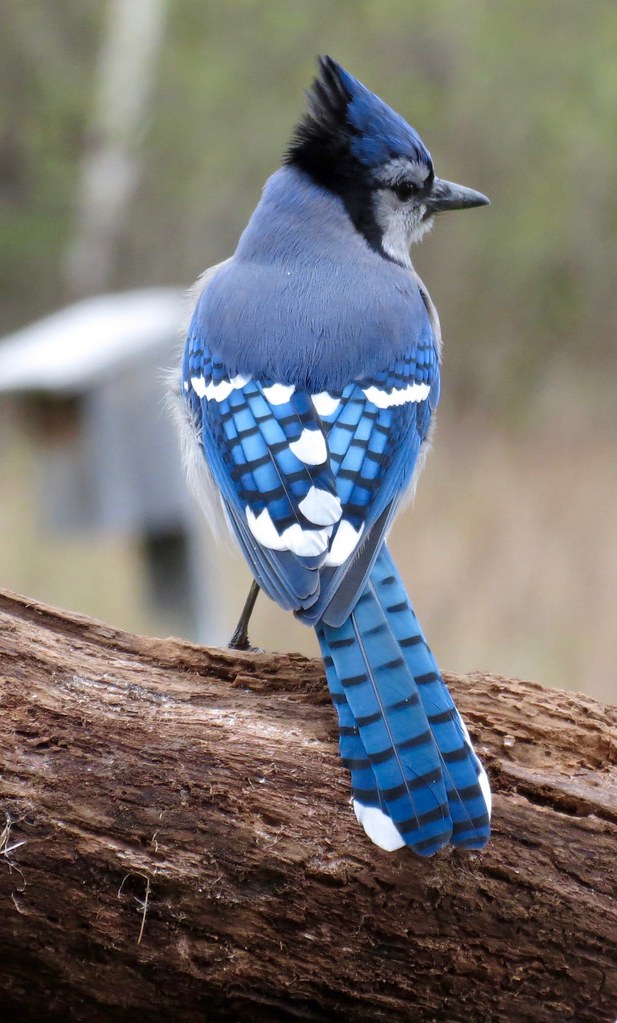
1. **Blue Jay**When you think of a jay, chances are the striking Blue Jay is the first image that springs to mind. These common large songbirds are truly unmistakable, boasting a vibrant blue upright crest, blue and black backs, and crisp white undersides, often accented by telltale white wing-bars. They command attention not just with their appearance but also with their loud “jayyy jayyy” call, a sound that resonates through the Midwest and East, where they predominantly live, though they are a rare sight west of the Rocky Mountains.
Blue Jays are not picky about their living arrangements, frequenting forests, particularly near oak trees due to their love for acorns. They are also regular visitors to suburban backyards, where they’ll happily stop by seed or suet feeders. Beyond acorns, their diet is quite varied, including insects, nuts and seeds, and grain. Interestingly, they’ve also been known to take eggs and nestlings from other birds’ nests, a reminder of their omnivorous nature.
Their vocal repertoire is diverse, encompassing a variety of harsh calls, clicks, peeps, ‘caws,’ and whistles. During courtship, however, they surprise listeners with a gentle, fluted song. If you’re looking to attract these boisterous beauties to your garden, peanuts, sunflower seeds, and suet placed on platform or tray feeders are your best bet. These feeders make it easy for the Blue Jay, being a large bird, to quickly fly in, grab a snack, and make a swift exit.
Here’s a fun fact that reveals their playful side: Blue Jays will engage with shiny objects like aluminum or bottle caps, carrying them around and dropping them just to pick them up again. While some might consider them bullies at feeders, their intelligence and engaging habits make them a truly captivating presence in North American birdlife.
Read more about: Beyond the Billionaire Bling: Deconstructing the ‘Bugatti Challenge’ TikTok Trend and Its Cultural Resonance
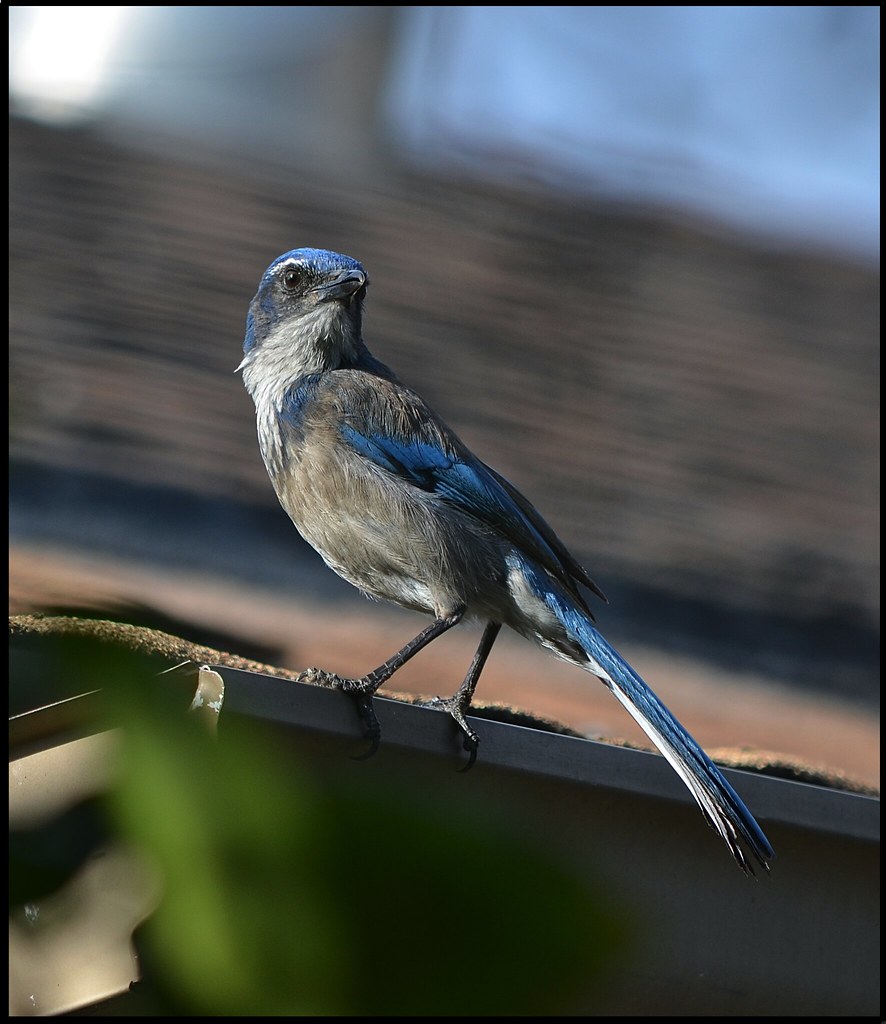
2. **California Scrub-Jay**Venturing west, we encounter the California Scrub-Jay, a distinct and bold species common across lower elevations of the Pacific Coast, from British Columbia down to Baja California. These crestless jays, visually similar yet more vividly colored than their interior cousins, the Woodhouse’s Scrub-Jay, are easily identified by their rich blue and gray backs, a bright blue breast band, and whitish undersides. They are robust songbirds, larger than a robin but smaller than a crow, known for their long tails.
These fascinating birds thrive in shrubby areas, oak woodlands, suburban yards, and parks. They are omnivores, meaning their diet shifts with the seasons. During spring and summer, they feast on insects and fruit, transitioning to seeds and nuts, especially acorns, in fall and winter. Acorns are such a favorite that they typically bury them for later consumption, a clever caching behavior. Look for their telltale white throat and gray back to confirm an identification.
California Scrub-Jays communicate with high-pitched, repetitive scolding cries, but also possess a sweet, quiet, and musical song they share with their mate, a common trait among many jay species. Unlike Florida scrub-jays, which stay in large flocks, California scrub-jays go off on their own to breed in isolated pairs. Both parents meticulously build their cup-shaped nests from twigs and moss, often hidden in oak trees, taking up to 10 days to construct.
For those hoping to welcome these intelligent jays, sunflower seeds and peanuts in backyard feeders are highly attractive. And prepare for a unique display: “California Scrub-Jay will screech over the body of a dead jay and invite others to do the same, and this can last up to half an hour,” according to research from the University of California – Davis, a truly remarkable behavior that puzzles scientists.
Read more about: North America’s Feathered Dynasts: Exploring the Intelligence, Diversity, and Unseen Hybrids of the Jay Family

3. **Steller’s Jay**High in the mountainous West, you might catch the distinct “shek-shek-shek” call of the Steller’s Jay, an unmistakable resident of evergreen forests. This large songbird is the only all-dark jay with a prominent triangular crest, giving it a distinguished appearance. Its head, chest, and back are a deep black, transitioning to a striking blue across the rest of its body, often with small white or blue spots on its forehead, making it a dramatic sight against the green canopy.
While they typically explore the higher canopies, Steller’s Jays are not shy about swooping into backyards or even campgrounds to visit feeders or investigate picnic tables. They are highly adaptable eaters, foraging for almost anything. Their diet includes insects, seeds, berries, eggs, and even nestlings. They have a reputation for being quite the opportunists, known to “nibble on unattended picnic lunches, too!” and causing a nuisance around garbage.
Their vocalizations are as varied as their diet, ranging from ‘kaw’ sounds to fast two-toned calls, peeps, and harsh guttural sounds. What’s truly impressive is their ability to mimic other noises, including the calls of other bird species, and even human-made sounds like sprinklers and alarms. This talent highlights their remarkable intelligence within the Corvidae family.
When it comes to nesting, Steller’s Jays build their sturdy homes near the top of conifer trees. These nests are crafted from leaves and plant material, held together with mud, and then softened with a cozy lining of pine needles. To attract these bold and intelligent birds to your space, offering peanuts and suet is a reliable strategy. It’s a fun fact that these jays use mud in their nest construction, showcasing their resourceful engineering skills.
Read more about: North America’s Feathered Dynasts: Exploring the Intelligence, Diversity, and Unseen Hybrids of the Jay Family

4. **Woodhouse’s Scrub-Jay**As we continue our journey through the western landscapes, we encounter the Woodhouse’s Scrub-Jay, often considered the ‘Blue-Jay’ of the Southwest due to its lovely blue and gray coloring. These jays reside inland in southwest US states and Mexico, particularly in wooded areas with pinyon-juniper and scrubby terrain. They are medium-sized songbirds, typically light blue and dark gray on the back with light gray undersides and long blue tails.
What sets them apart visually from their California cousins is their duller coloration and a smaller ‘necklace’ marking. Crucially, they lack the prominent crests seen in Blue Jays and Steller’s Jays. Their appearance is subtle yet distinctive, perfectly blending into their preferred pinyon-juniper scrub habitats. Their diet, like many jays, is seasonal: insects and fruit dominate in summer, while nuts and seeds, particularly acorns, become their staple in winter.
These jays build fairly simple platform nests, constructed from twigs and lined with moss and grass, offering a basic yet functional home for their young. Their calls, while not as extensively described as some other species, contribute to the ambient sounds of the scrublands they inhabit, signaling their presence to both mates and potential rivals. Observing their behavior reveals a fascinating adaptation to their environment.
Perhaps the most intriguing ‘fun fact’ about the Woodhouse’s Scrub-Jay points to a less-than-chivalrous habit: “Woodhouse’s Scrub-Jays are thieves that steal food from other birds stores, especially Acorn Woodpeckers’ granary tree store of acorns.” This clever, if opportunistic, behavior underscores their resourcefulness in securing food resources, a testament to the survival instincts shared across the Corvidae family. Attracting them to your backyard is as simple as providing sunflower seeds and peanuts.
Read more about: North America’s Feathered Dynasts: Exploring the Intelligence, Diversity, and Unseen Hybrids of the Jay Family
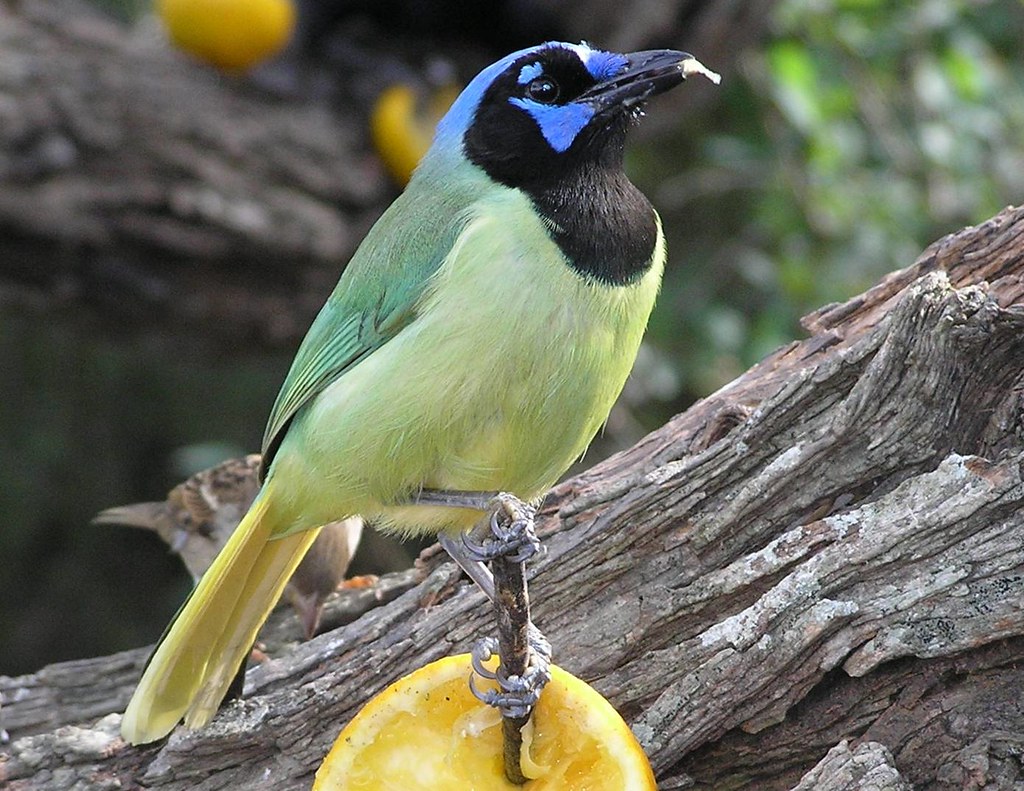
5. **Green Jay**Prepare to be dazzled by the tropical vibrancy of the Green Jay, a bird that truly lives up to its name with a spectacular mix of bright green, blue, and black. These jays feature dark green backs, paler bellies, and vivid blue and black heads, creating a striking contrast that makes them a rare but unforgettable find. While commonly found along the coasts of Mexico, Central America, and South America, this colorful species is a special sight in the US, primarily seen in southern Texas, though its range has been expanding.
Historically limited to the Rio Grande Valley, Green Jays are now sighted as far north as Laredo, Corpus Christi, and even San Antonio, nearly 300 miles away. This northward expansion, linked to a warming climate, makes observing them in Texan wildlife refuges a trend-focused and exciting endeavor. You’ll typically find them in woodlands near streams and water, where they enjoy a diet of insects, fruit, and seeds. Feeders stocked with oranges, grape jelly, peanuts, sunflower seeds, and corn are known to attract them, with water also being a significant draw.
Their vocalizations are as diverse as their plumage, producing a variety of fast calls that can be ‘Kaw’-like, buzzing, clicking, peeps, and even screams, adding to the rich soundscape of their habitats. Their nests are simple twig constructions, lined with moss, leaves, and grass, and remarkably, even their eggs can have a greenish tint! This attention to detail in their natural presentation is truly captivating.
Beyond their stunning looks, Green Jays boast an impressive intellect: they are “one of a few birds that can use tools,” employing sticks to pry up bark in their search for food. This sophisticated behavior further solidifies the reputation of jays as highly intelligent birds. Spotting a Green Jay is a highlight for any birder, offering a glimpse into a world of tropical beauty extending its reach northward.
Read more about: Beyond the Backstage Bananas: Unpacking the 13 Wildest Rider Demands of Music Superstars
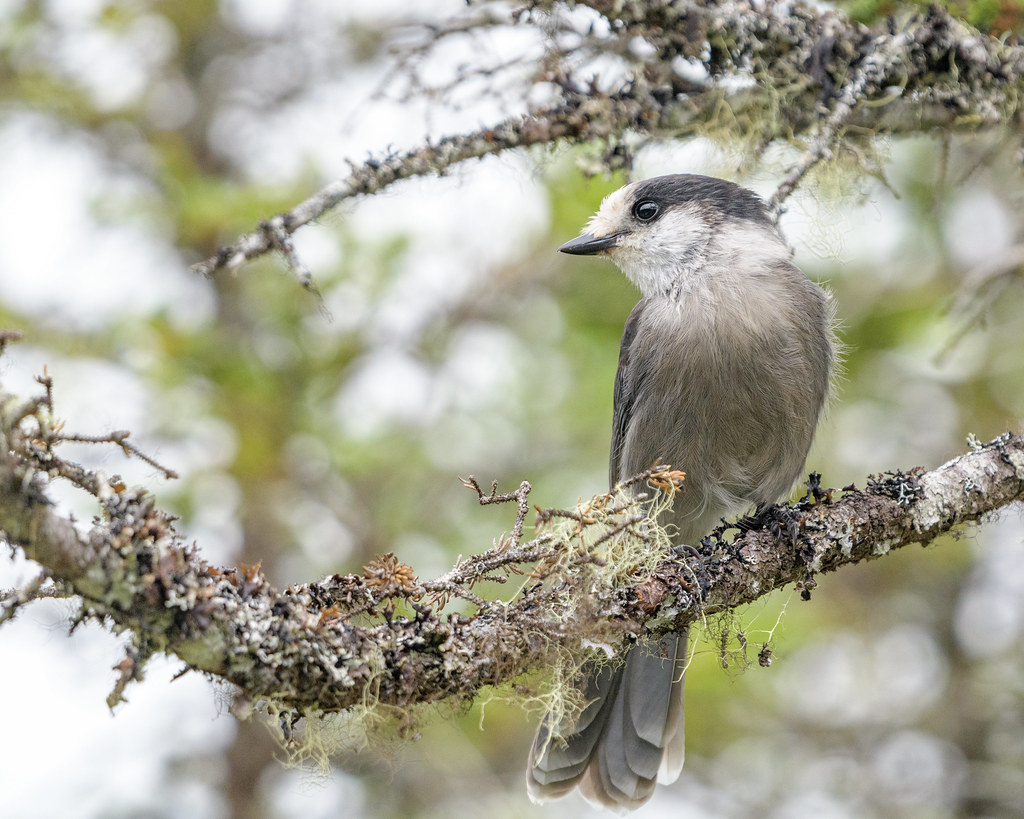
6. **Canada Jay**Shifting from tropical hues to the muted elegance of the North, we introduce the Canada Jay, formerly known as the Gray Jay. These endearingly tame and undeniably cute birds stand apart from their more boisterous relatives. Fluffy gray on the back and a soft pale gray below, with white heads and throats accented by a black band around the back of the head, they possess a unique charm. Females and males share the same appearance, though juveniles exhibit a darker gray overall. Their small bill is perfectly suited for twisting off meat, reflecting their dietary preferences.
Canada Jays are year-round residents of Canada, Alaska, and the high mountains of the northwest US, thriving in boreal, coniferous forests where spruce trees are abundant. What truly distinguishes them is their remarkable tameness; they are famed for approaching hikers, hunters, and campers, often eating directly from a human hand. They are opportunistic feeders, relishing meat, bread, suet, and other soft foods, which they cleverly cache in bark or branches, rather than in the soil.
Unlike most jays, nuts and seeds at feeders are less appealing to them, and they tend to be more silent than their kin, producing a gentle whispered song alongside harsher calls and clatters. However, their calm demeanor belies a predatory side: “Although they look sweet, Canada Jays have a deadly side, and they will kill baby birds for food and even hunt smaller species such as chickadees and warblers,” a fascinating, albeit stark, reminder of nature’s realities. They also exhibit an impressive ability to imitate other species’ calls.
Their nesting habits are equally intriguing. Canada Jays build their nests early in conifers, often while snow is still on the ground, constructing them from dead twigs and lining them with feathers on the south side of the tree for warmth. Their unique “fun fact” involves specialized saliva: “Canada Jays produce special saliva, which they use to mold food into a sticky blob, and then they stick it in a hiding place like gum under a desk,” an ingenious method for storing food. To attract these charismatic birds, most kinds of bird food, including seeds and suet, offered in tube or platform feeders, will do the trick.
As we continue our captivating journey through the diverse world of North American jays, prepare to meet more extraordinary avian characters, each with their own unique charm, ecological significance, and sometimes, a dash of playful mischief. From the declining Pinyon Jay to the endemic Island Scrub Jay, and a truly groundbreaking hybrid, our exploration reveals just how dynamic and resilient these intelligent birds truly are in an ever-changing environment.
Read more about: Beyond the Banquet: Unpacking the ‘Succession’ Cast’s Real Food & Style Habits, and the Roys’ Power Plays with Palates

7. **Pinyon Jay**Our next stop in the western skies introduces us to the Pinyon Jay, a species truly living up to “blue all over.” These striking birds boast a uniformly blue plumage, with darker backs and paler bellies. A telltale white throat and shorter tails set them apart, and unlike some relatives, the Pinyon Jay gracefully lacks a crest.
These jays are true residents of the inland western US states, particularly making their homes in pinyon-pine forests. They gather in large, noisy groups, roaming expansively in search of sustenance. Their communication is a chorus of three “kaw”-like calls, delivered close together, often rising and falling. As opportunists, their diet is varied: seeds from pinyon-pine are a favorite, supplemented by juniper berries, acorns, lizards, baby birds, and insects.
One fascinating adaptation: they lack feathers over their nostrils, preventing sticky pine pitch. Sadly, this species is in dramatic decline, with an estimated 85% reduction since 1970, largely due to habitat conversion for grazing. Offering sunflower seeds, peanuts, corn, and suet can be a welcome gesture in your backyard.
Read more about: North America’s Feathered Dynasts: Exploring the Intelligence, Diversity, and Unseen Hybrids of the Jay Family

8. **Florida Scrub-Jay**Venturing into the Sunshine State, we encounter the Florida Scrub-Jay, a truly special bird endemic to Florida, found nowhere else on Earth. These jays are unmistakable with their vibrant blue plumage, complemented by gray bellies, backs, and foreheads. Their long blue tails add to their elegant profile, and like their scrub-jay cousins, they lack a crest.
These non-migratory jays are deeply tied to Florida’s unique landscape, thriving exclusively in relatively open, sandy scrubby areas dominated by oak scrub—a habitat under significant threat. You’ll often spot them on the ground, foraging for insects and berries, but their true passion lies with acorns. These master hoarders can cache an astonishing 6,000 or more acorns each year, using a clever technique of holding the nut with their feet and hammering it open with their strong bills.
Florida Scrub-Jays are renowned for their highly social nature, constantly chattering with harsh calls. They form cooperative flocks, where young from previous years often help protect and feed new offspring. However, their future is precarious. Federally recognized as an endangered species, their precious scrub oak homelands are disappearing due to housing development. Providing peanuts at backyard feeders can offer crucial supplementary food.
Read more about: From Brilliant Blues to Stealthy Greys: Uncovering the Enduring Legacy of the Jay Family Across North America and Beyond

9. **Black-throated Magpie-Jay**Prepare to be utterly mesmerized by the Black-throated Magpie-Jay, a bird that truly lives up to its “magpie” moniker with its stunning, elongated tail and dramatic coloration. This large, strikingly beautiful bird is immediately identifiable by its conspicuous black crest and a matching black throat, creating a powerful contrast against its vibrant blue wings. A charming patch of blue on its eyebrows and beneath the eye completes its intricate facial mask.
These magnificent jays prefer tropical lowland forests, plantations, and partially open areas with tall trees and hedges, though they distinctly avoid humid woodlands. As typical members of the resourceful crow family, Black-throated Magpie-Jays are true omnivores. Their diet is wonderfully diverse, with a particular fondness for seeds and nuts, but they’re also known to hunt and consume insects and even smaller birds, highlighting their adaptability and predatory prowess.
Black-throated Magpie-Jays are diligent parents, crafting nests primarily from sticks and twigs, meticulously lined with softer materials for up to seven eggs. Their feeding habits are quite distinctive: they eat standing up, using one foot to firmly grasp their meal while the other skillfully places the food into their mouth, a remarkable display of avian coordination.
Read more about: From Brilliant Blues to Stealthy Greys: Uncovering the Enduring Legacy of the Jay Family Across North America and Beyond
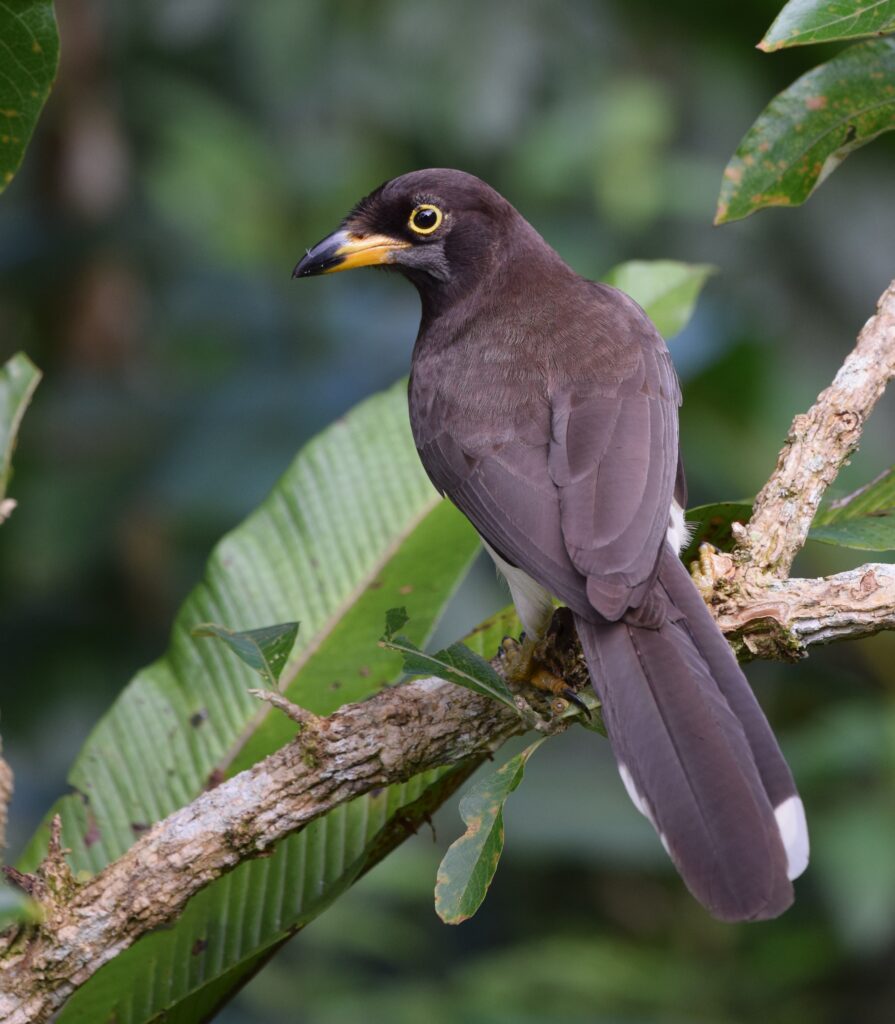
10. **Brown Jay**Next up, we delve into the world of the formidable Brown Jay, a bird that commands attention not just with its size but also with its unique coloration. These large jays can be almost entirely dark brown with a lighter tint on their backs, or in southern regions, they boast crisp white bellies and elegant white tips on their tail feathers. Adults sport sleek black bills, legs, and feet, while younger counterparts are easily identified by their bright yellow legs and distinctive yellow eyering.
While primarily found across Mexico and Central America, a significant population makes its home in Texas, marking the northernmost extent of their range. You’ll typically encounter these robust birds in dense woodlands, especially near tall trees and water sources. As omnivores, they feast on a wide array of foods, from insects and rodents to berries, fruits, seeds, and nectar. Their adaptable foraging strategy involves searching both on the ground and with agile hops from branch to branch.
The social structure of Brown Jays is particularly intriguing, known for their communal nesting habits. A flock will come together to share nests, often placed in a sturdy forked branch or a low-lying shrub. Several adults cooperatively construct and line the nest, laying up to eight eggs which hatch after around twenty days. The young fledge in about four weeks. The Brown Jay holds a special distinction: it is officially recognized as the largest North American Jay.
Read more about: Unlocking the Vault: A Deep Dive into Ralph Lauren’s Multi-Million Dollar Ferrari Collection and Beyond

11. **Mexican Scrub-Jay**Continuing our journey through the American Southwest, we encounter the Mexican Scrub-Jay, a captivating medium-sized bird distinguished by its pale, bluish-gray plumage. This species boasts a lighter coloration compared to many other jays, featuring a subtle grayish upper neckline and chest that complements its overall hue. Its small, black bill is perfectly adapted for its dietary needs.
Mexican Jays are steadfast residents of the mountainous regions of Arizona, New Mexico, and Texas, preferring open oak and pine woods and forests. Their diet is quite opportunistic; during warmer months, it’s predominantly made up of insects, small reptiles, and, intriguingly, the eggs and young of other birds. As colder weather approaches, their diet transitions dramatically to stored acorns and pine nuts, a testament to their meticulous caching behavior.
Their nests, a cooperative effort by both males and females, are built high in trees, protected by thick leaves. These sturdy homes are constructed from sticks and twigs, with a soft lining of rootlets and plants, typically housing around five eggs. A fascinating “fun fact” highlights an unusual interspecies relationship: Northern Flickers follow Mexican Jays during migration, using their loud, shrill voices as an early warning system against predators.
Read more about: From Brilliant Blues to Stealthy Greys: Uncovering the Enduring Legacy of the Jay Family Across North America and Beyond
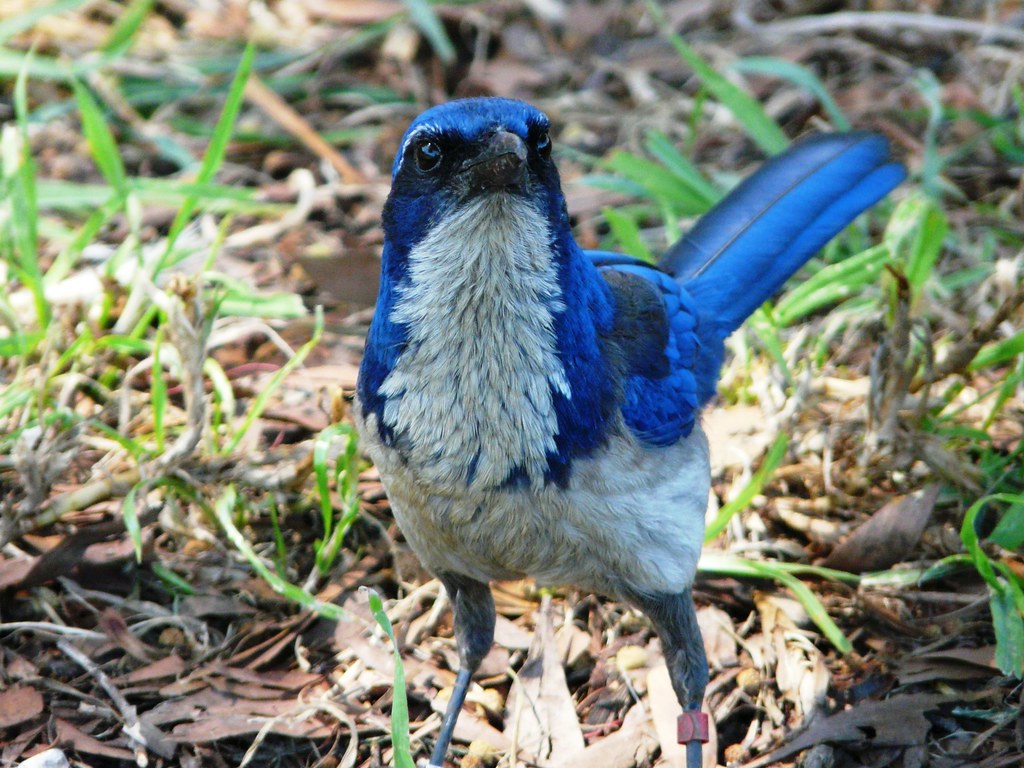
12. **Island Scrub Jay**Our final individual species spotlight takes us to a truly exclusive avian resident: the Island Scrub-Jay. As its name proudly declares, this striking bird is a permanent resident of Santa Cruz Island, making it endemic and non-migratory. Physically, it bears a strong resemblance to the California Scrub-Jay, but with a noticeable difference: its feathers are darker and boast richer, more intense colors. Its back is a beautiful blue, extending from its head to its tail, perfectly complemented by gray on the top of its wings and a crisp white throat.
Santa Cruz Island itself is a haven for this species, dominated by extensive oak woodland and chaparral, punctuated by streamside thickets, all providing ideal habitat. The Island Scrub-Jay’s diet reflects its island environment, consisting primarily of insects, small lizards, mice, and even the eggs and young of other smaller birds. Come fall, their menu shifts significantly as they indulge in a seasonal feast of acorns, using strong beaks to expertly break open the shells.
Their nests are skillfully hidden within the dense foliage of oak trees, ensuring both privacy and protection. These sturdy structures are meticulously built with twigs, then lined with soft rootlets and animal hair, creating a comfortable and secure environment for their offspring. The most captivating “fun fact” underscores its truly unique status: it has the smallest range of any North American bird, never venturing beyond the confines of Santa Cruz Island.
### The Enigma of the ‘Grue Jay’: A Beacon of Environmental Change
Having explored the individual brilliance of North America’s diverse jay species, we now turn to a truly unprecedented phenomenon that has captured the imagination of scientists and birders alike: the emergence of the “Grue Jay.” This isn’t just another beautiful bird; it’s an extremely rare hybrid, a startling cross between a Green Jay mother and a Blue Jay father, discovered flying around San Antonio, Texas, in 2023. This avian mashup has sent ripples through the scientific community, becoming a poignant symbol of rapid ecological shifts.
The Grue Jay itself is a fascinating visual spectacle. It sports the body and tail of a blue jay but with a distinctive larger area of black on its face, mirroring the facial patterns of a green jay. Intriguingly, it lacks the iconic spiky crown typical of a pure Blue Jay, instead exhibiting a spot over its eye, a telltale sign inherited from its Green Jay lineage. Its vocalizations were equally perplexing: following blue jays and mimicking their calls, yet also producing the characteristic clicks and rattling sounds of a green jay.
What makes this “Grue Jay” a “biological curveball” is the sheer evolutionary distance between its parents. Blue Jays and Green Jays diverged an astonishing 7 million years ago – roughly when humans and chimpanzees last shared a common ancestor! While bird hybrids are not uncommon, a pairing between species so distantly related is, as one evolutionary biologist marvelled, “just a really long time.” Genetic testing confirmed its unique parentage, solidifying its place as a scientific marvel.
The “why” behind this pairing is a symbol of our changing world. Scientists believe the Grue Jay represents the first observed vertebrate that has hybridized as a direct result of two species expanding their ranges, at least in part, due to human activity and climate change. Historically, the Green Jay, a tropical bird, was confined to the Rio Grande Valley. A warming climate allowed its range to expand north. Simultaneously, the Blue Jay’s range pushed westward, possibly following human suburbanization. This recent overlap created the improbable meeting ground for these two ancient lineages.
Ultimately, while scientists doubt this single hybrid will lead to a new “grue jay” species, its existence serves as a powerful and visible indicator of the profound, rapid, and often unexpected ecological changes unfolding across our planet due to human-driven factors. As one ecologist put it, we’re going to “see very different outcomes,” with lots of unusual weather and mixes of plants and animals we’ve never seen in the past. It’s a vivid illustration that we are entering a new era of unpredictable animal interactions and ecological communities.
Read more about: From Brilliant Blues to Stealthy Greys: Uncovering the Enduring Legacy of the Jay Family Across North America and Beyond
Our journey through the world of North American jays has revealed a tapestry of intelligence, adaptation, and beauty, from the familiar backyard visitor to the rare island dweller. Yet, the story of the Grue Jay stands as a potent reminder that our natural world is in flux, continually adapting, sometimes in surprising and groundbreaking ways, to the pressures we place upon it. These dazzling, intelligent birds are not just fascinating subjects of study; they are living barometers of environmental health, inviting us to observe, understand, and ultimately, protect the incredible biodiversity that surrounds us. Let’s keep watching, listening, and learning from these remarkable creatures, for their stories are inextricably linked to our own.



